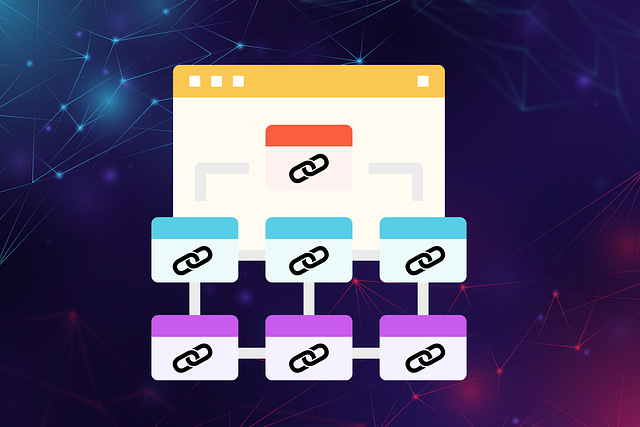Internal linking is a powerful SEO tool that enhances website navigation, user experience, and search engine rankings. To optimize for SEO, identify relevant keywords and incorporate them naturally in content using specific, keyword-rich anchor text. This strategy improves page rankings, engagement, and site visibility. Effective internal links guide users to valuable resources while providing search engines with context, reducing bounce rates, and driving organic traffic. Regularly analyze link performance metrics to refine strategies, ensuring a well-structured, user-friendly navigation experience that boosts SEO for long-tail keywords.
Internal linking is a powerful SEO strategy that connects your website’s pages, enhancing user experience and boosting search rankings. This guide delves into the art of using internal linking as a transactional keyword tool, revealing its significance in optimizing your site’s structure. We’ll explore strategies from understanding the role of internal links in SEO to identifying relevant keywords, crafting compelling anchor text, and ensuring a seamless user journey. Learn how to measure success and unlock your website’s full potential through effective internal linking practices.
- Understanding Internal Linking: Its Role in SEO Strategy
- Identifying Relevant Keywords for Your Landing Pages
- Creating Compelling and Contextual Anchor Text
- Optimizing Internal Links for User Experience
- Technical Considerations for Effective Internal Linking
- Measuring and Analyzing the Impact of Internal Linking on SEO
Understanding Internal Linking: Its Role in SEO Strategy

Internal linking is a powerful strategy that can significantly enhance your site’s search engine optimization (SEO) efforts. It involves creating hyperlinks between pages on your website, allowing users and search engines to navigate through relevant content seamlessly. By effectively implementing internal linking, you establish a clear hierarchy of information and provide valuable context for both visitors and search algorithms.
When optimizing your landing pages with tools for internal linking, consider how each page supports the overall SEO strategy. Linking to related resources within your site encourages users to explore more content, reducing bounce rates and increasing time spent on the website. This behavior signals to search engines that your site offers valuable information, which can lead to improved rankings in organic search results. An internal linking tutorial or strategy guide can help you understand the best practices for assigning anchor text, optimizing link placement, and ensuring a user-friendly navigation experience while boosting your SEO optimization.
Identifying Relevant Keywords for Your Landing Pages

When optimizing your landing pages for search engines (SEO), identifying the right keywords is paramount. Start by understanding your target audience and their information needs. Conduct thorough keyword research to uncover terms relevant to internal linking strategies, focusing on phrases like “how to use internal linking for SEO.” Tools like Google Keyword Planner or SEMrush can aid in discovering search volumes and competition levels for various keywords.
Relevant keywords should reflect the purpose of your landing pages and the actions you want visitors to take, such as improving site navigation and user engagement. Incorporate terms like “internal linking for SEO strategy” or “internal linking for SEO optimization” naturally within your content to enhance page rankings. Remember, keyword relevance is key to attracting the right audience and boosting your website’s visibility in search results.
Creating Compelling and Contextual Anchor Text

Creating compelling and contextual anchor text is a crucial aspect of effective internal linking for SEO. Each link should serve as a clear signal to both search engines and users about the destination page’s relevance and value. Instead of generic phrases like “click here” or “learn more,” use specific keywords that accurately describe the target content. For instance, if you’re linking to a guide on “SEO Best Practices,” your anchor text could be something like “Discover Essential SEO Best Practices for 2023.” This not only enhances user experience but also helps search engines understand the context and intent behind each internal link.
When crafting anchor text, consider using a mix of primary keywords and related long-tail phrases. Internal linking for SEO tutorial experts suggest keeping anchor texts concise and relevant. For example, if you’re linking to a blog post within your site about “optimizing meta descriptions,” an ideal anchor text could be “Master Meta Description Optimization Techniques.” Incorporating these strategies into your internal linking for SEO optimization routine can significantly improve the overall quality of your backlinks, leading to better search engine rankings and increased organic traffic.
Optimizing Internal Links for User Experience

Optimizing internal links is a powerful strategy to enhance user experience and significantly boost your SEO efforts. By using internal linking effectively, you create a seamless journey across your website, guiding users and search engines to relevant content. This technique helps reduce bounce rates as visitors find what they’re looking for faster, improving overall site usability.
When implementing an internal linking strategy, focus on creating meaningful connections between pages. Ensure anchor text is descriptive and accurately represents the target page’s content. This not only aids search engine crawlers in understanding your site’s architecture but also makes navigation more intuitive for users. A well-structured internal linking structure allows visitors to explore related content, encouraging deeper engagement with your website. For an SEO tutorial or tips on improving this aspect of your strategy, consider researching best practices and tools that can automate and optimize these processes.
Technical Considerations for Effective Internal Linking

Implementing effective internal linking strategies is a crucial aspect of optimizing your website for search engines (SEO). When done right, it can significantly enhance user experience and boost your site’s visibility. To use internal linking for SEO, start by understanding your target audience and their navigation patterns. Identify relevant pages that provide value to users and link them together in a logical manner. For instance, if you have blog posts on related topics, interlinking them can help users explore more content and reduce bounce rates.
When structuring your internal links, consider using anchor text that is descriptive and keyword-rich. This not only aids search engines in understanding the context but also provides users with a clear idea of what to expect when they click on a link. Additionally, pay attention to page load times and ensure that your internal linking structure doesn’t create unnecessary delays. Optimizing for speed is an essential SEO tip, as it directly impacts user experience and can influence search engine rankings.
Measuring and Analyzing the Impact of Internal Linking on SEO

Measuring and analyzing the impact of internal linking on your site’s SEO is a crucial step in optimizing its performance. By using tools that track click-through rates, session duration, and bounce rates, you can understand which links are driving traffic and engagement. These insights enable you to make data-driven decisions about where and how to implement internal linking strategies for SEO optimization.
For instance, an internal linking for SEO tutorial might highlight best practices like using relevant anchor text, placing links naturally within content, and interlinking related pages. Following these SEO tips can enhance the overall user experience while signaling to search engines that your site’s content is interconnected and valuable. This not only boosts your site’s visibility in search results but also increases the likelihood of ranking higher for long-tail keywords and relevant queries.
